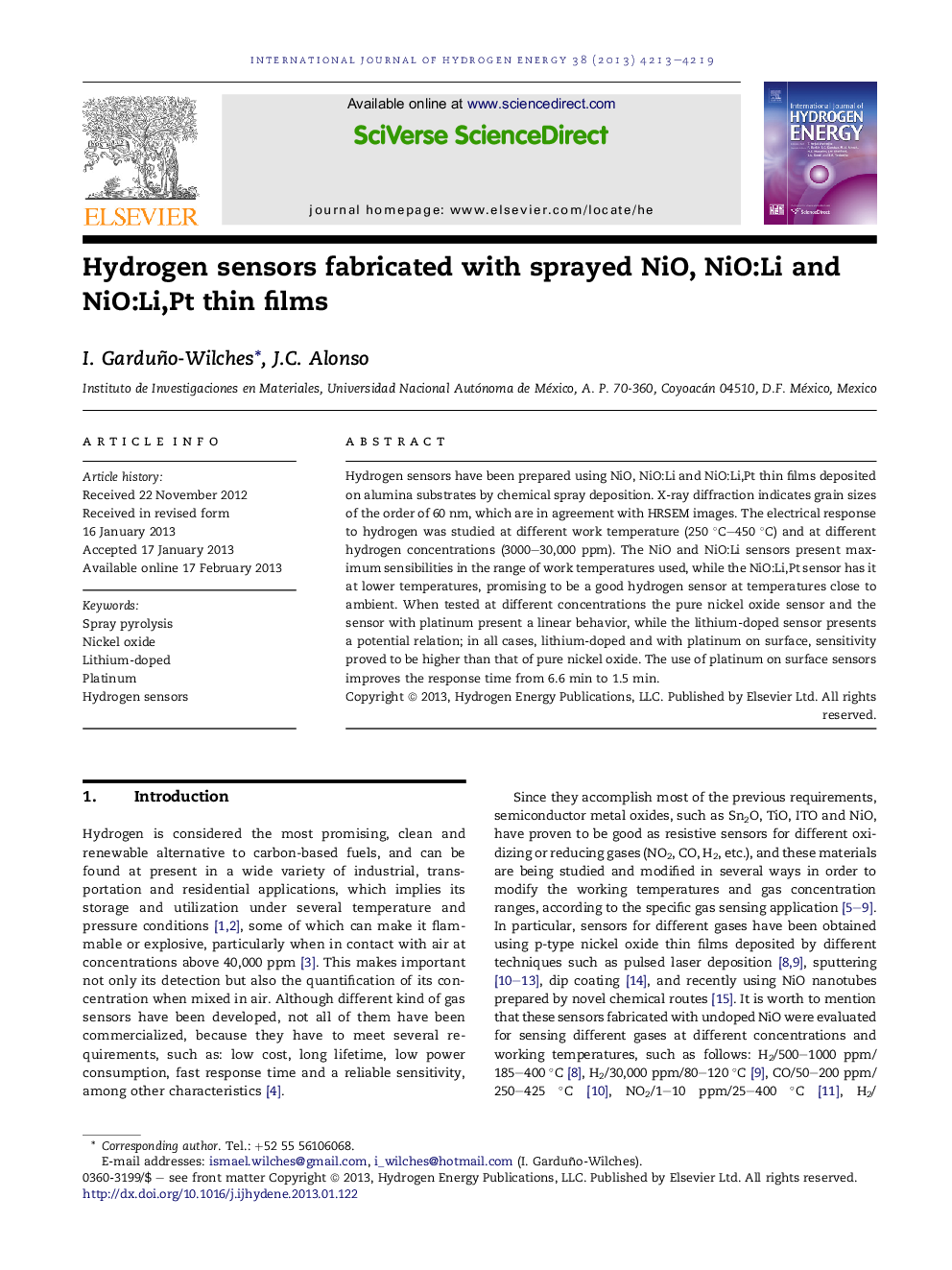| Article ID | Journal | Published Year | Pages | File Type |
|---|---|---|---|---|
| 1281886 | International Journal of Hydrogen Energy | 2013 | 7 Pages |
Hydrogen sensors have been prepared using NiO, NiO:Li and NiO:Li,Pt thin films deposited on alumina substrates by chemical spray deposition. X-ray diffraction indicates grain sizes of the order of 60 nm, which are in agreement with HRSEM images. The electrical response to hydrogen was studied at different work temperature (250 °C–450 °C) and at different hydrogen concentrations (3000–30,000 ppm). The NiO and NiO:Li sensors present maximum sensibilities in the range of work temperatures used, while the NiO:Li,Pt sensor has it at lower temperatures, promising to be a good hydrogen sensor at temperatures close to ambient. When tested at different concentrations the pure nickel oxide sensor and the sensor with platinum present a linear behavior, while the lithium-doped sensor presents a potential relation; in all cases, lithium-doped and with platinum on surface, sensitivity proved to be higher than that of pure nickel oxide. The use of platinum on surface sensors improves the response time from 6.6 min to 1.5 min.
► Sensors are produced by the spray pyrolysis technique on alumina substrates. ► Lithium and platinum are used to enhance the sensitivity of the sensors. ► Sensitivity is investigated as a function of work temperature and concentration of H2. ► Platinum reduces the work temperature and the response time of the sensors. ► Sensors response has linear or potential behavior with hydrogen concentration.
